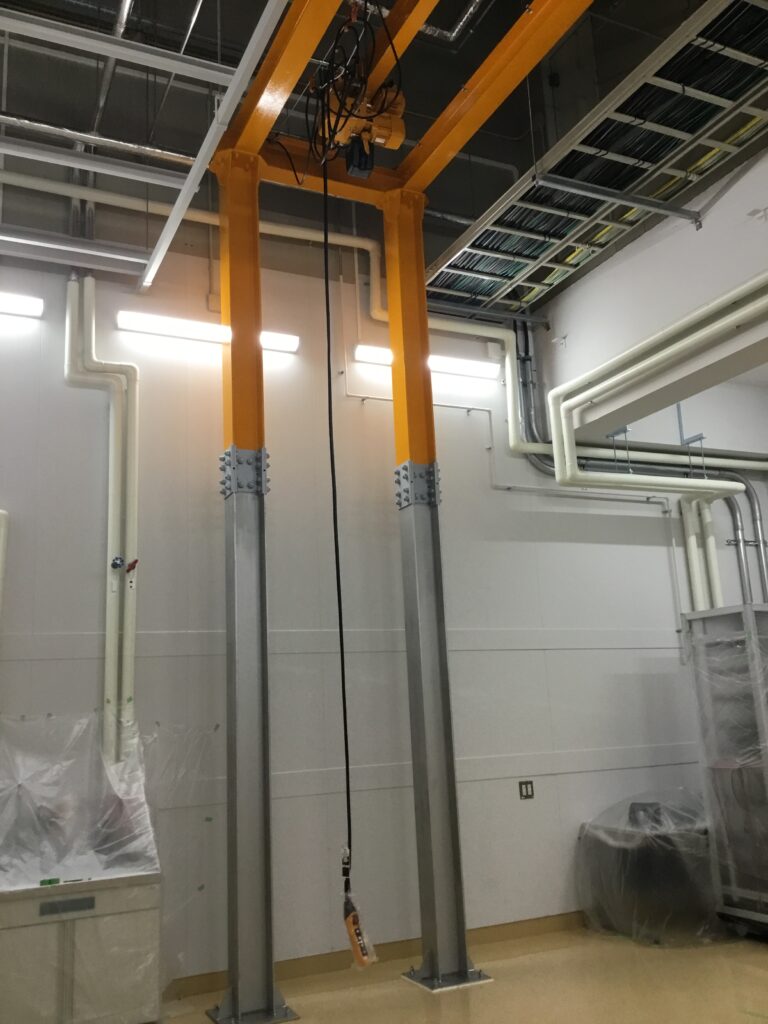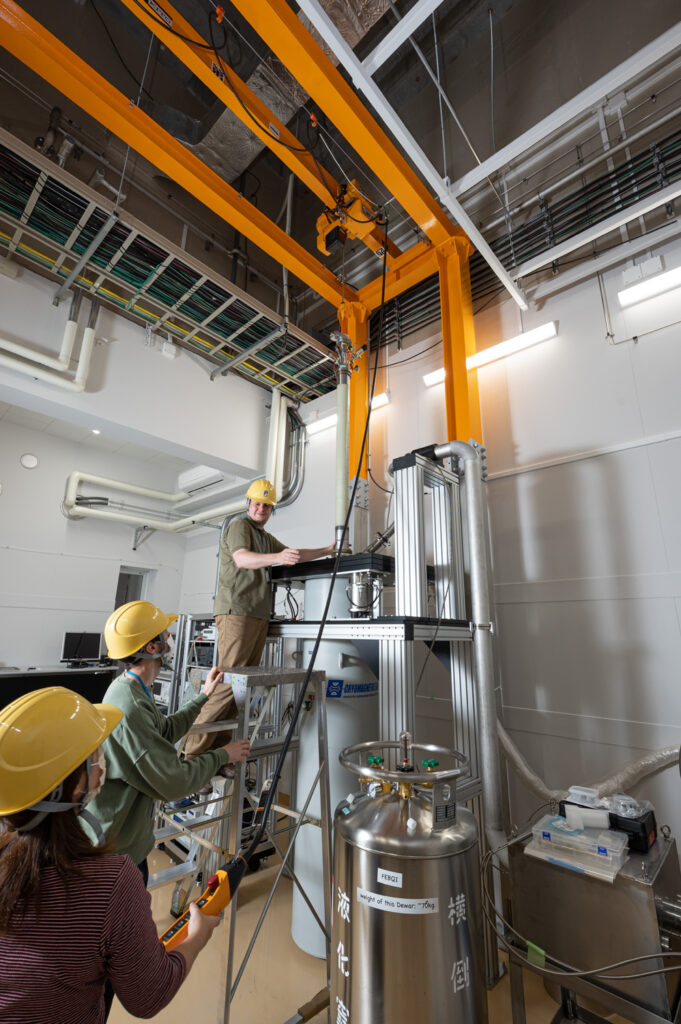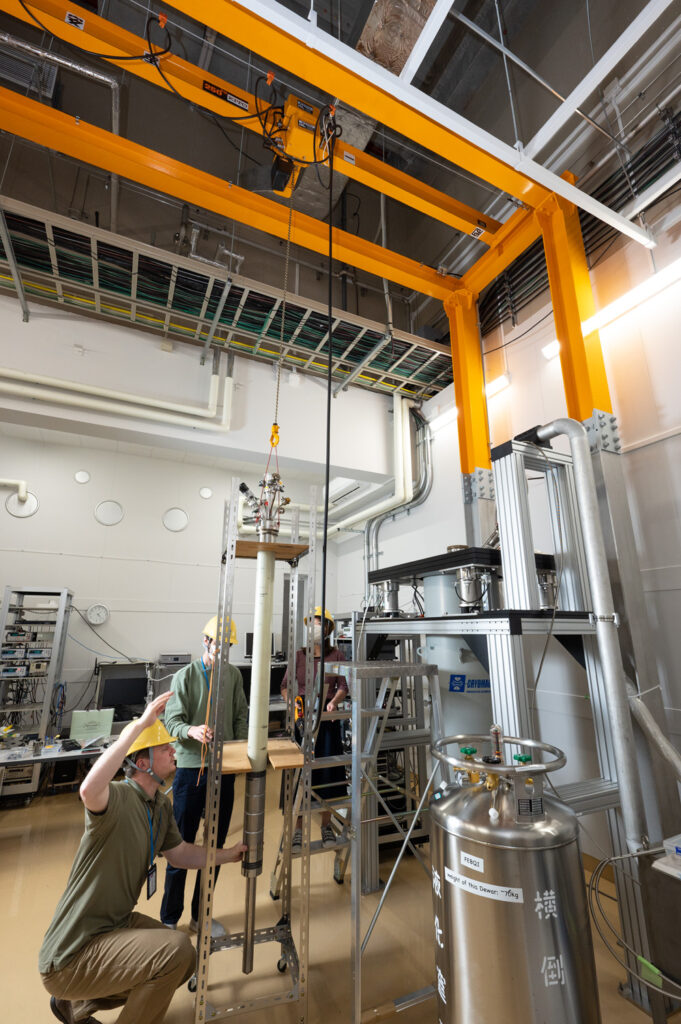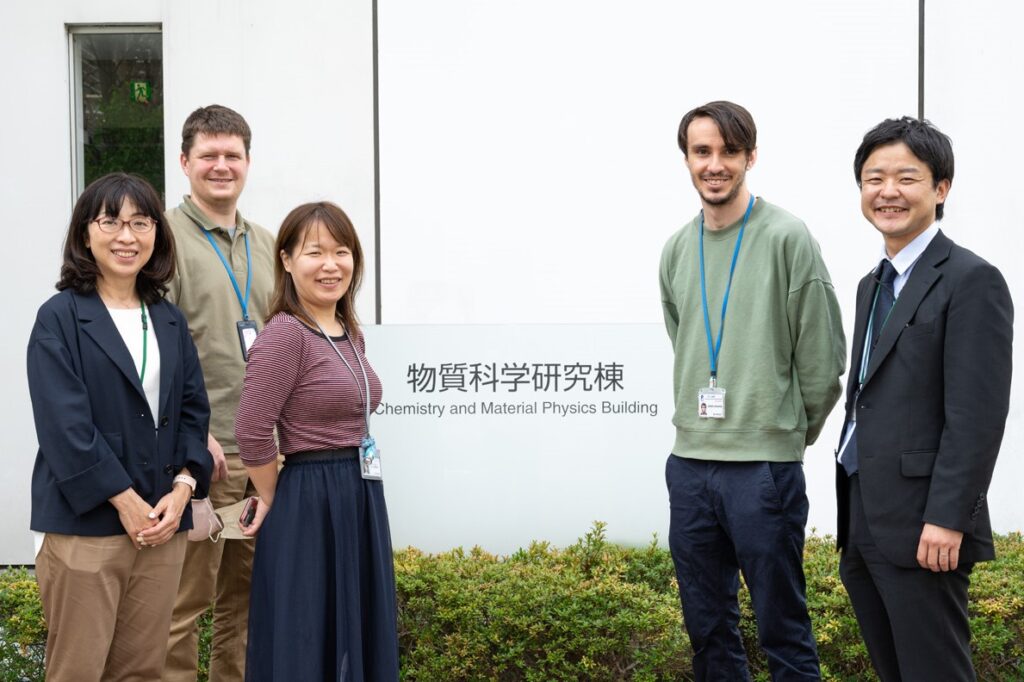Aug. 19.2022
Kito Cranes Support Research on Tiny Matters
We visited Erika Kawakami PhD in her laboratory at Riken, Wako City, Saitama, where her research theme is quantum computing. Why would she need a crane to study things so small that the human eye can’t hope to discern them? This opportunity to get to know her research soon clarified that mystery.

Once the team decided to use large equipment for research, a crane became necessary. The one they chose has a lifting range of over five meters, and to install it we had to take out ceiling panels, as seen in the photo, and move whatever was overhead that might interfere.

The crane installation went without problems, and the team used it to move a large device into the lab. We asked Dr. Kawakami what she needs it for: “With this device we measure quantum effects. We put a small substrate in it and cool it to minus 273°C, because the quanta are harder to break in such a cold environment.”

To measure the quantum effects, a small substrate is placed in a narrow tube as long as 2.5 meters, leaving little wonder why they need a crane with a lifting range of over five meters. The team demonstrated how the crane operates for us, with a comment that made us especially happy: “The crane starts and stops smoothly, and is enjoying a good reputation among the people around here.”

“The progress in quantum computing technology,” she stressed, “allows analysis of things that conventional computers can’t analyze, substantially speeding up processing and establishing absolute security. It helps in many areas of our society.”
Dr. Erika Kawakami (third from left)


